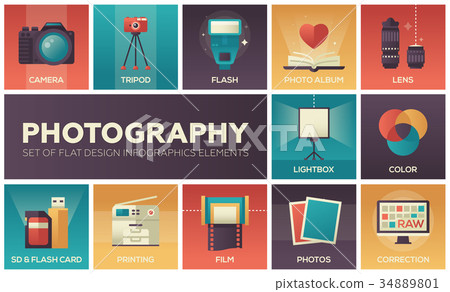Join Us To Uncover Essential Digital Photography Ideas That Will Certainly Open Your Video Camera'S Capacity-- Prepare To Record Magnificent Pictures In No Time At All!
Join Us To Uncover Essential Digital Photography Ideas That Will Certainly Open Your Video Camera'S Capacity-- Prepare To Record Magnificent Pictures In No Time At All!
Blog Article
Write-Up Writer-Christian Elmore
When you initially pick up your cam, it can really feel overwhelming with all the setups and alternatives readily available. You could find yourself asking yourself exactly how to browse aperture, shutter rate, and ISO effectively. Grasping these basics is important, but there's more to digital photography than just technical knowledge. Recognizing composition strategies and illumination conditions can raise your photos substantially. So, suppose you could learn basic approaches to boost your abilities and start capturing outstanding photos quicker than you believe? Allow's discover just how to transform your digital photography trip.
Understanding Electronic Camera Settings
Comprehending your camera setups is vital for recording magnificent photos. When you grab your electronic camera, familiarize on your own with the 3 major settings: aperture, shutter speed, and ISO. Each plays an important duty in how your photos end up.
Beginning with aperture, which manages the quantity of light getting in the lens. A larger aperture (reduced f-number) lets in extra light and creates a beautiful history blur, excellent for pictures. Conversely, a narrower aperture (greater f-number) keeps even more of the scene in emphasis, ideal for landscapes.
Next off, focus on shutter rate. This setting determines for how long your electronic camera's sensing unit is revealed to light. A quick shutter speed freezes motion, which is great for action shots, while a slow-moving shutter speed can produce spectacular impacts like smooth water in landscapes.
Last but not least, readjust your ISO. This setting affects your electronic camera's level of sensitivity to light. A higher ISO serves in low-light circumstances but can present sound or grain. Aim for the most affordable ISO feasible while still accomplishing proper direct exposure.
Make-up Techniques
When you're out shooting, make-up can make all the distinction in how your photos reverberate with audiences. Begin by using the policy of thirds; imagine your framework split right into 9 equal sections with two horizontal and 2 upright lines. On location Photography along these lines or at their crossways to create equilibrium and interest.
Next off, consider leading lines. These natural lines in your scene, like roads or rivers, attract the visitor's eye into the photograph, assisting them through the story you're telling.
Do not forget mounting; use elements within your scene, like trees or windows, to develop a structure around your topic, adding depth and focus.
Additionally, keep an eye on your history. A cluttered background can sidetrack from your primary topic, while an easy one aids it stand apart.
Last but not least, experiment with proportion and patterns; they can create a striking picture that captures interest.
Learning Illumination Conditions
Grasping illumination problems is essential for recording spectacular pictures, as the best light can transform an ordinary scene into something remarkable.
Beginning by observing all-natural light at various times of the day. Mornings and late afternoons supply the very best light, referred to as the gold hour. The soft, cozy tones during these times can improve your images beautifully.
Don't shy away from overcast days either; diffused light can lessen severe darkness and create a pleasing impact, particularly for pictures.
Explore backlighting by positioning your topic against the light. This method can develop a fanciful halo effect and include depth to your images.
Pay attention to your electronic camera setups too. Adjust the ISO, aperture, and shutter speed to fit the illumination problems. A higher ISO can assist in low light, yet beware of grain.
Use a tripod in darker atmospheres to prevent blur.
Last but not least, do not fail to remember man-made lights. Flash and continual lights can be excellent devices for controlling light in tough problems.
Conclusion
To conclude, understanding your electronic camera does not have to be overwhelming. By understanding https://petapixel.com/2015/06/09/so-what-kind-of-photographer-are-you/ , applying make-up techniques, and using the power of all-natural light, you'll quickly raise your photography skills. Bear in mind, exercise makes perfect, so venture out there and try out your newfound knowledge. With time and dedication, you'll be capturing stunning pictures that mirror your one-of-a-kind point of view. Delight in the trip, and do not forget to have fun while you're at it!
